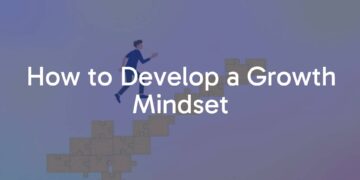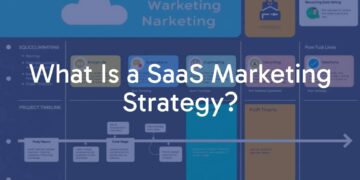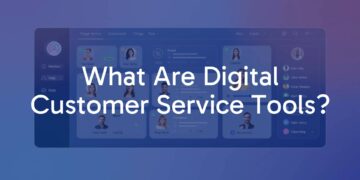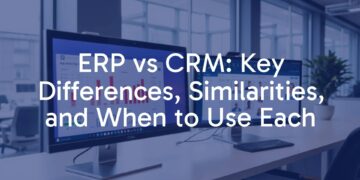The traditional focus of companies on the customer has to change. The business focus needs to now shift to employees. Here’s why.
Today when one asks what a company’s focal point should be centered around, companies all over the world answer: customers. Jeff Bezos has publicly stated that in his opinion, it is a customer-centric obsession that has made Amazon what it is today. This is not news, however: clothing and department shops as early as the initial years of the twentieth century had come up with mantras like “The customer is king”. In modern times entrepreneurs often go for customer-acquisition models for their businesses rather than profit-based models. They do this even if their start-ups are burning through cash, risking the possibility that they will burn out and disappear.
It must be acknowledged that customers are the lifeblood of an organization. Without customers, no company would survive.
There’s something to be said, however, for this approach potentially having a cognitive bias. A cognitive bias is when someone has a subjective expectation of future output, based on one’s own pre-existing conceptions about input. Meaning, most CEOs have backgrounds in finance or sales and marketing. It is likely, therefore, that when deciding what their company’s focus should be going forward, they decide on something that they previously have in-depth knowledge of. This often ends up being hard finance, or direct sales.
The cognitive bias here ignores the metrics of soft measures inexperience. And that’s a big problem.
The key question here hinges on the point: with your customer-obsession, you can get the customer, but can you keep the customer?
In truth, your product is very rarely going to be so uniquely amazing that it’ll be impossible for the customer to locate a good replacement from a competitor. In today’s world, there are very few perfect monopolies. Competitors – indeed, multiple competitors – either already exist, or else come up for every kind of product there is. Possible replacements abound.
The way to ensure having an advantage over the opposition, then, would be to ensure good customer experience at the point of purchase. Well and good, you would say, that just proves the point: ‘customer’ experience surely means all-importance is to be given to the customer. But when we come down to it, what is this ‘point of purchase’?
Despite the rise of digitization, the business has hardly completely shifted to e-commerce. The point of purchase, therefore, usually exists where your employee interacts with your customer – quite literally, where the handing over of the product is taking place. And how your employee behaves at the particular moment of this exchange can create a host of tangible or intangible cues that will likely determine the future behavior and course of action of any consumer.
It’s unlikely that customers are going to return to a point of exchange where employees serving them have been irritable, ungracious, glum, and clearly dissatisfied with the workplace culture. Consumers might be less likely to re-buy from such a point of exchange even if the product itself satisfied them.
This is why it’s vital to look at ways life can be made interesting and attractive for the employees of an organization, and get employees actively involved in the product. To focus on making better places to work, instead of an overarching focus on the customer, is now crucial. This will in turn only help with the customer’s experience.
CEOs already know truckloads about improving customer happiness. They might use some of that knowledge in making lateral transitions and focus on improving the happiness of their employees. Opportunities to allow a sense of fulfillment to the employees, for example, exist in a variety of ways and places. From improved maternity room facilities to permitting space and time for employees to play around with the kind of coding and software that interests them. To take simpler examples, the organization of in-house sports tournaments, or a measure to have a committee of the employees themselves designing their uniform.
These actions are really this simple, but the multiplier effects of the resultant increase in employee morale would be immense. Additionally, giving scope to employees to unleash creativity would only help with productivity and retention in the long run – if one just has the vision to see it.
In the age of data science, machine learning can help. Google’s ex Human Resources chief Laszlo Block’s invention, Humu uses machine learning to ‘nudge’, applying the Nobel-prize winning methodology of Richard Thaler and Cass Sunstein. It provides personalized coaching moments for employees in the flow of their day-to-day. This employee-focused software helps people work better as part of teams, helps them develop productive behaviors, and helps with their mental health.
It would be beneficial for CEOs to utilize the services of resources like Humu, or rivals that will no doubt come up in the years ahead. There is also no reason why some of the methodologies that go into mapping overall customer satisfaction and overall customer happiness cannot be re-oriented to map overall employer satisfaction and employee happiness. This would also have applications in gauging employee retentivity levels of an organization and be a concrete register of the productivity of its workforce.
It’s likely that when the pandemic presently sweeping through the world leaves it, or when a vaccine is found, employees will return to their places of work scarred and laden with issues. This is a point in time when firing the person is likely to be of little help, because the replacement employee is likely going to have the same traumatic baggage. This challenge needs to be turned into an opportunity: there’s no better time than this moment to break with traditional management’s focus. It’s time for the employee to be in the focus’s spotlight.






































